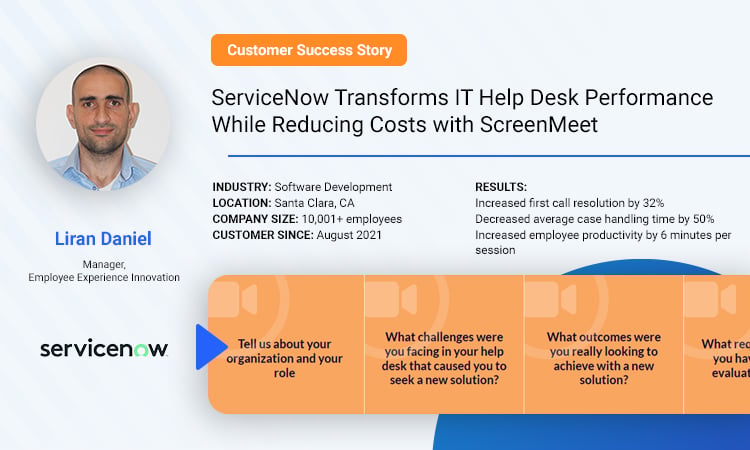

In today’s tech-fueled business world, nothing kills productivity faster than a broken piece of technology. Time is money, and the more downtime a worker has, the more costly that downtime is.
That’s why it’s essential for IT support to deliver fast, seamless technical assistance. However, that becomes more complicated when IT teams lack the right tools and platforms to deliver a high level of service. Outdated solutions end up costing organizations more with disrupted operations, frustrated staff, and lackluster customer experiences.
Fortunately, there are a few strategic steps IT leaders can take to improve productivity organization-wide by using upgraded remote support capabilities. Let’s take a closer look at how your organization can thrive when it puts the best remote support tools in place.
Assess Workflow Gaps
The first step to improving productivity is to get a good picture of where you are. Start by assessing workflow gaps, conducting a comprehensive analysis aimed at identifying platform limitations that may be impeding service efficiency. This will help you identify and quantify productivity lags and pinpoint parts of processes that are slowing performance.
Employee Perspectives:- Conduct focus groups and interviews to capture user experiences with support across the organization. Probe satisfaction, common challenges, features desired, and more. Compile trends.
- Distribute surveys to gauge the relative importance of support improvements against other tech projects in the pipeline.
- Document platform response times, capability gaps like mobile access or automation, availability of usage analytics, and compliance with standards.
- Interview IT admins to quantify platform management inefficiencies and barriers to keeping pace with growth.
- Analyze help desk ticket metrics like volume, first contact resolution rates, escalation rates, and backlogs. Is support quality increasing or decreasing?
- Tie increasing support costs from maintenance fees or staffing directly to platform limitations by using cost allocation analysis.
Remember that it’s important to be meticulous in your documentation during this step in order to capture and understand employee and customer pain points. This holistic approach not only reveals any hidden challenges in the workflow but also lays the groundwork for strategic improvements, ensuring a more streamlined and effective business operation.
Build Your Business Case
Once you’ve identified the workflow gaps and their impact on delivering services, you can start crafting a compelling business case that will help you strategically align the gaps with overarching productivity and satisfaction goals. By connecting your findings to broader organizational objectives, you’ll be able to build a business case that resonates with your leadership team.
Your business case needs to address both the costs of maintaining the status quo and the potential savings that could result from addressing the issues you have identified. Demonstrating the financial impact of proposed changes not only adds weight to the argument but also underscores the tangible benefits of the recommended upgrades.
Finally, to garner widespread support, it is imperative to rally stakeholders around the urgent need for this strategic upgrade. Effectively communicating the critical nature of the improvements can instill a sense of shared purpose, fostering alignment and commitment from other department leaders. It’s essential to position the proposed enhancements as a vital catalyst for organizational growth and success.
Deploy Future-Focused Solutions
It’s impossible to entirely future-proof an organization, but there are a few key steps you can take to ensure that the remote support platform you use not only returns value from day one but builds it over the long-haul.
The key to success here is to onboard an intuitive, cloud-native solution that is fully embedded in the systems you’re already working with. The result? More ROI with less training and no added cost. You can also use improved support experience as a selling point.
Track Productivity Improvements
Of course, one of the most important things you need to do throughout this process is to meticulously track productivity improvements. After all, this is why you’ve recommended it in the first place.
Tracking should start with benchmarking key metrics before and after you deploy your remote support solution. By quantifying the impact on efficiency, satisfaction, and return on investment (ROI), you’ll be able to clearly demonstrate the tangible benefits of this initiative. See the metrics ServiceNow measured against when they switched from their legacy remote support tool to ScreenMeet's cloud-native remote support solution.
Once you’re armed with compelling data showcasing improvements, the next logical step is to expand the deployment to additional teams. This iterative approach will help ensure the success of future implementations but will also ensure a scalable and sustainable model for widespread organizational advancement. As the metrics continue to validate the solution’s efficacy, this data-driven strategy becomes a guiding force in shaping future deployment decisions, fostering a culture of continuous improvement and heightened productivity.
The Path to High-Performance Support
Poor technical assistance multiplies costs and aggravations organization-wide, but optimizing these very same capabilities unlocks immense latent productivity. Transitioning from outdated platforms to solutions purpose built for the realities of dispersed digital work allows your business to capture this potential.
ServiceNow transformed its IT help desk performance while reducing costs using ScreenMeet. The proof was in the numbers with first call resolutions increasing by 32%.
“It saves time because they don’t need to download anything. They don’t need to go to another console. We save three minutes here. Another minute there. So we can see the difference,” stated Liran Daniel, Employee Experience Manager of ServiceNow.
- Decreased average case handling time by 50%
- Increased employee productivity by 6 minutes per session
Equipped with the right tools, your distributed IT heroes sustainably scale support as demand increases. They shatter operational silos by embedding capabilities in existing platforms. Most importantly, by understanding user needs continually, they help delight colleagues across the enterprise.
Ready to upgrade and empower your remote IT support? Let’s chat! Contact us to discuss your remote IT challenges and learn how ScreenMeet can help you overcome them.









